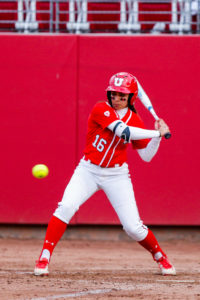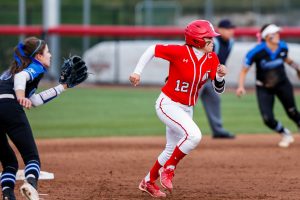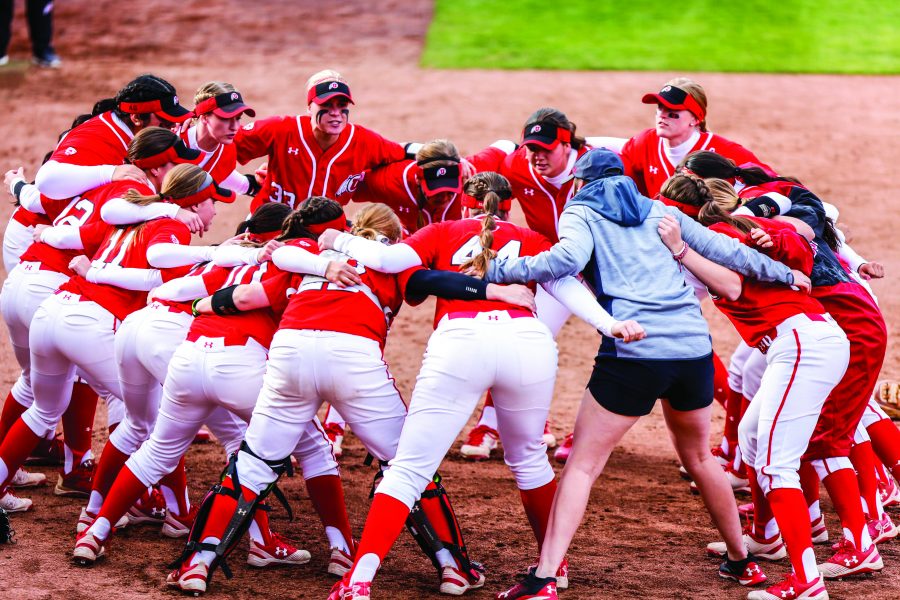When you consider the types of role models that are readily available to young people in the world, it seems as though boys look up to big strong athletes, tech executives and actors while girls have models, dancers and singers.
These trends have been evident in our society for a long time and it can be challenging for young female athletes to find someone to look up to when many female athletes do not fit into the typical female stereotypes upheld by our society. Especially in the world of sports, male athletes are valued over females and they are more known as role models for young kids.

(Photo by Curtis Lin | Daily Utah Chronicle)
I believe that, in promoting men’s sports so much, we are encouraging boys to play sports— but who is encouraging girls? A lack of strong athletic women in our media and in our world is detrimental to young girls in sports.
Growing up, I was a three-sport athlete, and if you had asked 10-year-old me or even 16-year-old me who I wanted to be like, I would have listed players from the San Francisco Giants roster. Some of my favorite players growing up were Tim Lincecum, Buster Posey and Freddy Sanchez, and I would have done anything to be like them.
As a softball player, I didn’t have any athletes that I looked up to. I knew who Jennie Finch was and I admired Valerie Arioto, but I had never seen them play. I didn’t even know what they looked like.
During my years of taking hitting lessons from a male baseball coach who taught me to swing like a baseball player, I was told to model my swing after hitting greats such as Chase Utley, Mike Trout or Barry Bonds. Never was I given a picture of a professional softball player or shown videos of college girls playing the same game that I was.
I think that a lack of female influence might have been one of the reasons that I began to lose interest in playing sports. I was putting in all of this hard work for what result? I would never become a celebrated athlete because, for every headline about a female athlete, it seems as though there are five about men.
It’s one of the most frustrating parts of growing up as a female athlete, that not knowing who to look up to, and because of this lots of young girls turn to male athletes as their role models. While this is not a bad thing, it can get tough as you get older.
I found these challenges evident when I would watch boys play baseball and they could hit twice as hard as me and throw further, even though we practiced the same amount. I found it frustrating, and I didn’t know how to work through it.
In college, as I have started to become more exposed to women’s sports, I realize that I was comparing myself in the wrong ways. There are incredible women competing in collegiate athletics and they are just as talented as the boys in their own ways. There are so many strong and capable women competing in the sports world, and I wish that I had known that growing up.
I think that an easy fix to these problems is just to expand the conversations that we are having about athletics. Women’s sports are just as fun to watch as men’s sports. They just don’t get the attention that they deserve.

(Photo by Curtis Lin | Daily Utah Chronicle)
At the University of Utah, the Red Rocks are a premier college gymnastics team. They are the highest-attended women’s sport in the NCAA and they are one of only two NCAA teams to have competed in the postseason every year since the program was formed.
The Red Rocks are one of those teams that are breaking down these societal expectations. Gymnastics fans are intense at meets, and the team delivers an exciting match every time.
It is important that female athletes are recognized in the same ways as male athletes because athletics are designed for all people. No one should be excluded, and athletes should be celebrated for what they do, not put down or pushed aside because of their gender.
In this world where gender equality has come so far, it is time for this movement to spread to sports so that we can celebrate the role models that shape the young people within our generations.



